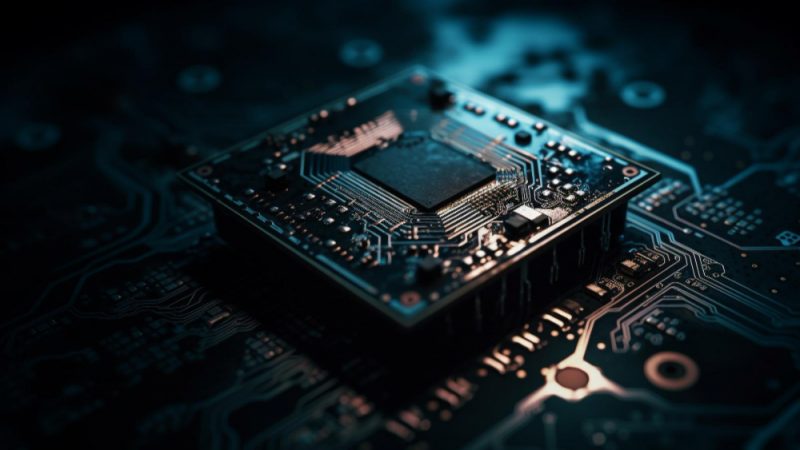How Artificial Intelligence Innovations are Used in the Fitness Industry

When you look around yourself today, every process around you is governed by some sort of technology. Automated machinery, smart monitoring processes, state-of-the-art apps, and others are some prime elements that have almost transformed every industry sector for good.
One of the key technologies that have taken deep roots in various industry sectors is Artificial Intelligence. Artificial Intelligence, or AI as a market, was valued at $39.9 billion in 2019. Moreover, it is expected to grow at a tremendous CAGR of 42.2% from 2020-2027.
This massive growth of AI has led to widespread adoption, especially in the fitness industry. You may not know this, but there are over 37,000 fitness apps on Google Play. Many of these are AI-based and can also be connected to smart devices.
Let’s take a dig at the various aspects of AI in fitness!
Smart wearables
If you have a smartwatch or smart band, then you are already on the radar of AI. But AI is not just limited to smartwatches and smart bands. Yes, they are the most adopted devices. However, there are many other advanced wearables that work on the microscopic level to assist the fitness freaks.
For example, various bands from MI, Apple, Samsung, etc., help in live tracking of various body vitals. Here are some great examples of other smart wearables:
- Ambiotex: The brand’s trail-blazing smart shirt has a brilliant internal system that provides valuable health insights to the users. The combination of built-in sensors and clip-on box records stores data such as heart rate variation, fitness level, stress levels, etc.
An athlete can view this data on the smartphone app that also provides them with training programs. One can quickly analyze this data for optimized training results.
- Athos: Athos is also an excellent monitoring system for your body. It comes with smart clothing made of woven and a patented system that helps you know how hard your body muscles are working during the workout.
The system tracks heart rate, muscle effort, and breathing. Further, it presents this information in an app that has AI, which can help you train better and avoid injuries. The smart clothes made by Athos work on the principle of Electromyography.
- Nadi X Yoga Pants: Developed by the Australian startup Wearable X, Nadi X Yoga Pants can help in identifying the correctness of your yoga pose. The pants send small vibrations to the various parts of your legs that need adjustment via haptic feedback.
Moreover, they also generate pulses at knees, ankles, and hips to encourage users to move or adjust their position. The yoga pants can also be linked to an app on your phone via Bluetooth. The app provides extra information to the users using AI, such as yoga pose optimization, personal yoga class, etc.
These are just some of the basic examples. Apart from these, there are many other smart wearables that serve as an excellent example of AI in fitness. Another crucial thing to keep in check is that fitness app development is necessary for all of these. We will explore more about this further!
Personal Trainers and Fitness Applications
AI in fitness is basically controlled by software. Every piece of the smart device has an application at the backend that performs complex calculations and comparisons to provide valuable insights. Fitness apps are the same.
They collect user data and run deep analysis on that and produce optimum results to take action on. Most of the collected user data is about user vitals like breathing rate, muscle mass, heart rate, and even images. hese applications are also known as digital personal trainers or personal training client tracking software that run entirely based on AI concepts like machine learning, neural networks, etc.
Let us take a look at some of these applications:
- Kaia: Kaia is an innovative AI-powered virtual personal training app. The uses of the app are countless. One of the primary use is real-time motion tracking of user actions and movements while exercising. The app uses the phone camera and a 16-point system that compares the movements of the user with those of the ideal movements and positions.
Based on this, it creates fitness plans and provides real-time audio feedback to enhance the user’s performance.
- Freeletics: Freeletics is one of those AI-powered fitness apps that is widely used by people around the world. The reason behind this is pretty straightforward. The app leverages the power of machine learning and data mining to generate highly effective workout programs for its users.
Backed by ML, the app requests the users for basic information like age, gender, and potential goal.
Based on the cross-referencing of the obtained data with its database (consisting of millions of users and their workouts), Freeletics curates unique workout regimes for its users.
Not only this, but the app also permits the users to give feedback and tracks their progress. Further, it also suggests the user’s workouts based on their satisfaction and equipment type.
Hence, if you plan to develop a fitness app, do integrate AI into it.
AI in Diet
Fitness app development is not just limited to workouts and exercises. To keep your body fit, it is equally necessary to maintain a diet. Here are some apps that can help you with it!
- HealthifyMe: It is an Indian AI-powered fitness and dietary app that addresses the queries of its users and provides them with food recommendations based on that. The app assistant named ”Ria” leverages user information acquired from their smart devices to curate diet plans and adjust them if needed.
Besides this, Fitgenie and Nutrino are also prime app examples of the fitness app development sector that can help fitness enhancement.
Wrap Up!
To develop a fitness app is not an easy job. However, if you have an ingenious idea that can help people boost their overall health and fitness, it is worth a try. Moreover, it is necessary to acknowledge that you have to integrate AI into it if you develop a fitness app as it is a booming market. It will surely cost more but will also yield remarkable results.
Author Bio
Name: Robert Jackson
Robert Jackson is content cum digital marketer at Solution Analyst, a leading Healthcare app development company. He is an avid reader and likes to remain updated for technological advancements in the domains of web, mobility, IoT, and emerging technologies. His articles are informative and interesting at the same time as he expresses insightful thoughts clearly.






